MaryAnn Bernal's Blog, page 226
October 23, 2014
Diane Turner - London Rocks - 21.10.2014
Published on October 23, 2014 08:19
Book Launch - Frankie: Living A Dream by D.G. Turner - available on Kindle

FRANKIE: LIVING A DREAM
It's 1950. The landscape of New York City is changing, Perry Como is on the radio and protesters are marching against the Korean war. For the first time the voice of the youth is being heard.
Frankie, an ambitious sixteen year old son of a barber, has a dream. Any dream will do as long as he never follows his father's profession as a barber. As he is the eldest son, it is inevitable the shop will be passed into his hands.
When Artie Santorelli proposes to Frankie to join his burgeoning barbershop quartet because of his singing prowess, Frankie, realising his dream, agrees. Along with his co-worker Carlo and neighbour Tommy, they form a group which attracts the attention of country singer Kentucky Jo, her husband Hank and the local Mafia boss, Petrucci.
Amazon US
Amazon UK

Published on October 23, 2014 04:59
History Trivia - Second Battle of Philippi – Mark Antony and Octavian decisively defeat Brutus' army
October 23
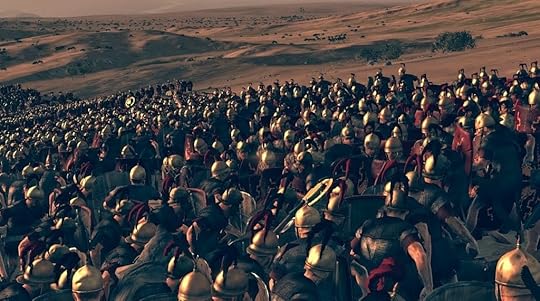
42 BC Roman Republican civil wars: Second Battle of Philippi – Mark Antony and Octavian decisively defeated Brutus' army. Brutus committed suicide.
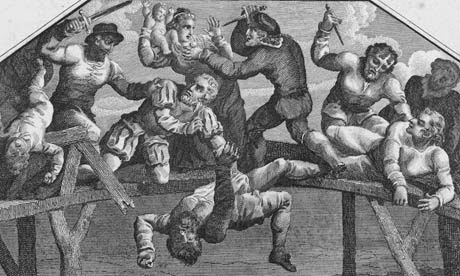
1641 Rebellion in Ireland: Catholics, under Phelim O'Neil, rose against the Protestants and massacred men, women and children to the number of 40,000 (also reported at 100,000).
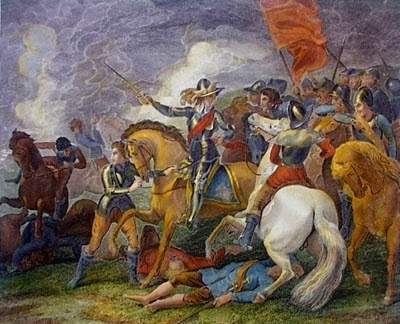
1642 Royalist forces defeated the Parliamentarians at Edgehill, the first major battle of the English Civil War.


42 BC Roman Republican civil wars: Second Battle of Philippi – Mark Antony and Octavian decisively defeated Brutus' army. Brutus committed suicide.

1641 Rebellion in Ireland: Catholics, under Phelim O'Neil, rose against the Protestants and massacred men, women and children to the number of 40,000 (also reported at 100,000).

1642 Royalist forces defeated the Parliamentarians at Edgehill, the first major battle of the English Civil War.

Published on October 23, 2014 04:58
October 22, 2014
Ancient Human Skulls Shed Light on Dairy Use
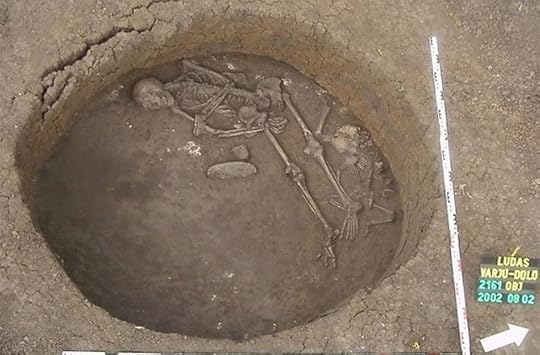 Charles Choi
Charles ChoiA Late Bronze Age burial from the site of Ludas-Varjú-dulo, Hungary dated to about 1200 B.C. This individual marks the onset of lactose tolerance in the region.
The DNA from ancient human bones is shedding new light on the prehistory of Europe, such as when changes in skin color and lactose tolerance occurred, researchers say.
This research unexpectedly revealed that ancient Europeans started dairying thousands of years before they evolved genes to make the most of milk in adulthood, investigators added.
Scientists examined ancient DNA extracted from 13 individuals in archaeological burial sites unearthed during highway construction in the Great Hungarian Plain in Central Europe. This crossroads for Eastern and Western cultures experienced significant transformations in culture and technology known to have shaped European prehistory. The bones at the site span about 5,000 years, from 5,700 B.C. to 800 B.C., ranging across the Stone, Copper, Bronze and Iron Ages. [Image Gallery: Our Closest Human Ancestor Revealed]
PHOTOS: What Our Ancestors Looked LikeAfter several years of experimentation with a variety of kinds of bones, the researchers discovered the best place to recover ancient DNA for analysis in humans is the petrous bone, a pyramidal bone at the base of the skull. The name petrous comes from the Latin word "petrosus," meaning "stonelike." The petrous bone is the hardest bone in the human body and very dense, forming a protective case for the inner ear.
"The high-percentage DNA yield from the petrous bones exceeded those from other bones by up to 183-fold,"the study's joint senior author Ron Pinhasi, an archaeologist at University College Dublin in Ireland, said in a statement. "This gave us anywhere between 12 percent and almost 90 percent human DNA in our samples, compared to somewhere between 0 percent and 20 percent obtained from teeth, fingers and rib bones."
The DNA the scientists recovered helped them systematically examine the skeletons. "Our findings show progression towards lighter skin pigmentation as hunter-and-gatherers and nonlocal farmers intermarried," Pinhasi said in the statement.
The scientists also found that great changes in prehistoric technology, such as the adoption of farming, and the first use of hard metals such as bronze and then iron, were each associated with the substantial influx of new people.
In the Neolithic or New Stone Age, ancient central Europeans did not look anything like modern central Europeans, "but were closer to Sardinians," or people from the Italian island of Sardinia, Pinhasi told Live Science. "With the Bronze Age, you get a total shift into populations that look more like Western Europeans, and in the Iron Age you get another shift, with people genetically coming from the East, such as the Caucasus or Asia. These shifts were probably associated with major migrations and population turnovers in Central Europe."
Surprisingly, Pinhasi and his colleagues found that ancient Central Europeans apparently remained intolerant to lactose, the natural sugar in the milk of mammals, until the Bronze Age, about 4,000 years after these people began dairying. Artifacts that archaeologists previously unearthed suggest ancient Europeans started dairying 7,500 years ago in the Neolithic period. Most of the world is lactose intolerant, unable to digest lactose as adults, and the evolution of the ability to break down this sugar in adulthood helped Europeans take advantage of animal milk, a highly nutritious food.
Paleo Diet May Have Included Sweets, Carbs
"These ancient Europeans would have raised domesticated animals such as cows, sheep and goats without having yet developed the genetic tolerance for drinking milk from mammals without problems," Pinhasi said.
Pinhasi suggested ancient Europeans may have practiced dairying "not to drink milk, but to consume milk products such as cheese and yogurt," he said. "The processes that make cheese and yogurt break down lactose. Nowadays, in the Caucasus region, most people eat cheese and yogurt, but milk drinking is not a big thing."
The scientists are now sequencing even more ancient human genomes dating back 13,000 years from the Caucasus and other parts of Europe "to find out about genetic diversity that existed before and after the Ice Age," Pinhasi said. "We are also analyzing ancient farmers to find out who the first farmers truly were."
The scientists detailed their findings online Oct. 21 in the journal Nature Communications.
Discovery News

Published on October 22, 2014 15:11
Missing Sphinx Head Found in Ancient Greek Tomb
By Megan Gannon
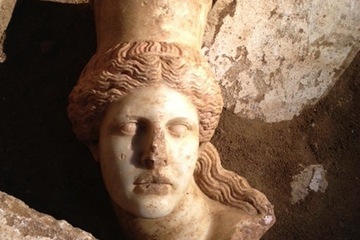
Besides its broken nose, the sphinx head is rather intact.
Credit: Greek Ministry of Culture
Archaeologists have discovered the missing head of one of the two marble sphinxes guarding a huge Macedonian tomb under excavation in Amphipolis, Greece.
The statue's head has wavy hair that falls to its left shoulder, and it bears traces of red paint, according to an update yesterday (Oct. 21) from the Greek Ministry of Culture. Excavators also found fragments of the broken wings from the pair of sphinxes that stand at the entrance of the tomb.
Enclosed by a marble wall 1,600 feet (490 m) in perimeter, the monumental burial mound at Amphipolis in northern Greece could be the largest of its kind in the Greek world. The archaeologists leading the ongoing excavation have not yet determined who is buried in the tomb (or if it is even intact), but they have said they believe the complex dates back to the fourth century B.C., during the era of Alexander the Great. [See Photos of the Mysterious Ancient Tomb in Amphipolis]
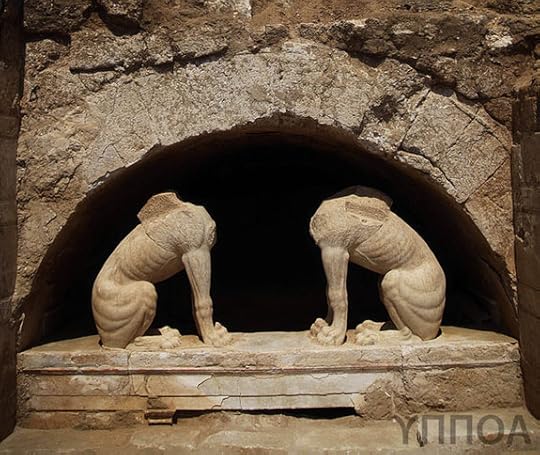
[image error] The head belonged to the eastern sphinx (at right) guarding the entrance to the Amphipolis tomb.
Credit: Greek Ministry of Culture
The excavators don't expect to find Alexander the Great's long-lost grave inside the tomb, as historical records indicate the Macedonian empire-builder died in Babylon and was buried in Alexandria. But dig leader Katerina Peristeri told reporters last week that whoever was buried there must have been "extremely important."
The dig attracted widespread attention after the headless sphinxes at the entrance to the tomb were revealed in August. As the archaeologists have probed deeper into the tomb's soil-filled inner chambers, they've made some remarkable discoveries. Last week they uncovered an elaborate floor mosaic made from colorful pebbles arranged to show the Greek goddess Persephone being whisked away to the underworld by Hades in a chariot drawn by a pair of white horses. The messenger god Hermes is also present in the figurative scene wearing his signature broad-brimmed hat.
The newly revealed sphinx head was missing part of its nose, but was otherwise quite intact. It was found beyond the floor mosaic, in the fourth chamber of the tomb, according to the Greek Ministry of Culture. In Greek art, sphinxes typically have the body of a lion, the wings of a bird and the head of a woman. In the face, the sphinx somewhat resembles the larger-than-life, intricately carved caryatids discovered in the Amphipolis tomb a few weeks ago. The caryatids — female statues that take the place of columns or pillars — flank the doorway of the second entrance to the tomb.
Live Science

Besides its broken nose, the sphinx head is rather intact.
Credit: Greek Ministry of Culture
Archaeologists have discovered the missing head of one of the two marble sphinxes guarding a huge Macedonian tomb under excavation in Amphipolis, Greece.
The statue's head has wavy hair that falls to its left shoulder, and it bears traces of red paint, according to an update yesterday (Oct. 21) from the Greek Ministry of Culture. Excavators also found fragments of the broken wings from the pair of sphinxes that stand at the entrance of the tomb.
Enclosed by a marble wall 1,600 feet (490 m) in perimeter, the monumental burial mound at Amphipolis in northern Greece could be the largest of its kind in the Greek world. The archaeologists leading the ongoing excavation have not yet determined who is buried in the tomb (or if it is even intact), but they have said they believe the complex dates back to the fourth century B.C., during the era of Alexander the Great. [See Photos of the Mysterious Ancient Tomb in Amphipolis]

[image error] The head belonged to the eastern sphinx (at right) guarding the entrance to the Amphipolis tomb.
Credit: Greek Ministry of Culture
The excavators don't expect to find Alexander the Great's long-lost grave inside the tomb, as historical records indicate the Macedonian empire-builder died in Babylon and was buried in Alexandria. But dig leader Katerina Peristeri told reporters last week that whoever was buried there must have been "extremely important."
The dig attracted widespread attention after the headless sphinxes at the entrance to the tomb were revealed in August. As the archaeologists have probed deeper into the tomb's soil-filled inner chambers, they've made some remarkable discoveries. Last week they uncovered an elaborate floor mosaic made from colorful pebbles arranged to show the Greek goddess Persephone being whisked away to the underworld by Hades in a chariot drawn by a pair of white horses. The messenger god Hermes is also present in the figurative scene wearing his signature broad-brimmed hat.
The newly revealed sphinx head was missing part of its nose, but was otherwise quite intact. It was found beyond the floor mosaic, in the fourth chamber of the tomb, according to the Greek Ministry of Culture. In Greek art, sphinxes typically have the body of a lion, the wings of a bird and the head of a woman. In the face, the sphinx somewhat resembles the larger-than-life, intricately carved caryatids discovered in the Amphipolis tomb a few weeks ago. The caryatids — female statues that take the place of columns or pillars — flank the doorway of the second entrance to the tomb.
Live Science

Published on October 22, 2014 15:02
Ancient human bone helps date our first sex with Neanderthals
Ian Sample
Oldest genome sequence of a modern human suggests Homo sapiens first bred with Neanderthals 50,000-60,000 years ago
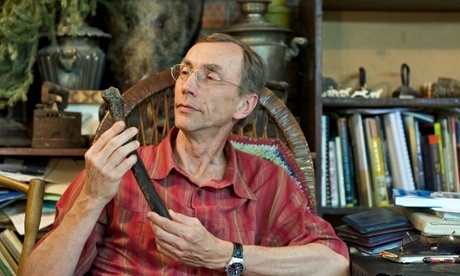
Neanderthal DNA specialist Svante Pääbo examines the anatomically modern human femur, found near Ust’-Ishim in western Siberia. Photograph: Bence Viola/MPI EVA
An ancient leg bone found by chance on the bank of a Siberian river has helped scientists work out when early humans interbred with our extinct cousins, the Neanderthals.
A local ivory carver spotted the bone sticking out of sediments while fossil hunting in 2008 along the Irtysh river near the settlement of Ust’-Ishim in western Siberia. The bone was later identified as a human femur, but researchers have learned little else about the remains until now.
The importance of the find became clear when a team led by Svante Pääbo and Janet Kelso at the Max Planck Institute for Evolutionary Anthropology in Leipzig ran a series of tests on the fragile material.
Radiocarbon dating of pieces of the leg bone put the remains at around 45,000 years old. The team went on to extract DNA from the bone, which allowed them to reconstruct the oldest modern human genome ever.
The genetic material showed that the thigh bone belonged to a man who carried about 2% Neanderthal DNA, a similar amount to people from Europe and Asia today. The presence of Neanderthal DNA meant that interbreeding between them and modern humans must have taken place at least 45,000 years ago.
But amid the DNA were more clues to when humans and Neanderthals reproduced. Strands of Neanderthal DNA found in modern humans can act like a biological clock, because they are fragmented more and more with each generation since interbreeding happened. The strands of Neanderthal DNA in the Siberian man were on average three times longer than those seen in people alive today. Working backwards, the scientists calculate that Neanderthals contributed to the man’s genetic ancestry somewhere between 7,000 and 13,000 years before he lived.
The findings, published in the journal Nature, suggest that humans and Neanderthals had reproductive sex around 50,000 to 60,000 years ago, though other couplings might well have happened later. Until now, estimates for interbreeding have varied enormously, ranging from 37,000 to 86,000 years ago.
“What we think may be the case is that the ancestors of the Ust’-Ishim man met and interbred with Neanderthals during the initial early admixture event that is shared by all non-Africans at between 50,000 and 60,000 years ago, and perhaps somewhere in the middle East,” Kelso told the Guardian.
But a small number of fragments of Neanderthal DNA in the man’s genome were longer than expected given how many generations had passed. Those might be evidence of his ancestors breeding with Neanderthals closer to the time he was born.
“Everyone outside Africa has about same amount of Neanderthal DNA. It seems to be something early on where one really mixed with Neanderthals in a serious way,” said Pääbo. “Since that happened I wouldn’t be surprised if, now and again, one did it here and there later on too.”
Prior to the latest study, the oldest modern human genome came from the 24,000-year-old remains of a boy buried at Mal’ta near Lake Baikal in easterbn Siberia.
Chris Stringer, head of human origins at the Natural History Museum in London, said the ancient DNA from the Siberian man sheds fresh light on the story of early human migrations out of Africa. In the 1920s and 30s, researchers found 100,000-year-old skeletons of modern humans in caves in Israel. The remains may have belonged to a group of humans that left Africa and ultimately went on to colonise southern Asia, Australia and New Guinea. But an alternative explanation is that they were from a migration that failed to go much further. According to that view, the more successful dispersal of humans out of Africa happened much later, around 60,000 years ago.
The latest findings suggest that the ancestors of modern Australians, who carry a similar amount of Neanderthal DNA to Europeans and Asians, are unlikely to have picked up their own Neanderthal DNA before 60,000 years ago. “The ancestors of Australasians must have been part of a late, rather than early, dispersal through Neanderthal territory,” Stringer said.
“While it is still possible that modern humans did traverse southern Asia before 60,000 years ago, those groups could not have made a significant contribution to the surviving modern populations outside of Africa, which contain evidence of interbreeding with Neanderthals,” he added
The Guardian

Oldest genome sequence of a modern human suggests Homo sapiens first bred with Neanderthals 50,000-60,000 years ago

Neanderthal DNA specialist Svante Pääbo examines the anatomically modern human femur, found near Ust’-Ishim in western Siberia. Photograph: Bence Viola/MPI EVA
An ancient leg bone found by chance on the bank of a Siberian river has helped scientists work out when early humans interbred with our extinct cousins, the Neanderthals.
A local ivory carver spotted the bone sticking out of sediments while fossil hunting in 2008 along the Irtysh river near the settlement of Ust’-Ishim in western Siberia. The bone was later identified as a human femur, but researchers have learned little else about the remains until now.
The importance of the find became clear when a team led by Svante Pääbo and Janet Kelso at the Max Planck Institute for Evolutionary Anthropology in Leipzig ran a series of tests on the fragile material.
Radiocarbon dating of pieces of the leg bone put the remains at around 45,000 years old. The team went on to extract DNA from the bone, which allowed them to reconstruct the oldest modern human genome ever.
The genetic material showed that the thigh bone belonged to a man who carried about 2% Neanderthal DNA, a similar amount to people from Europe and Asia today. The presence of Neanderthal DNA meant that interbreeding between them and modern humans must have taken place at least 45,000 years ago.
But amid the DNA were more clues to when humans and Neanderthals reproduced. Strands of Neanderthal DNA found in modern humans can act like a biological clock, because they are fragmented more and more with each generation since interbreeding happened. The strands of Neanderthal DNA in the Siberian man were on average three times longer than those seen in people alive today. Working backwards, the scientists calculate that Neanderthals contributed to the man’s genetic ancestry somewhere between 7,000 and 13,000 years before he lived.
The findings, published in the journal Nature, suggest that humans and Neanderthals had reproductive sex around 50,000 to 60,000 years ago, though other couplings might well have happened later. Until now, estimates for interbreeding have varied enormously, ranging from 37,000 to 86,000 years ago.
“What we think may be the case is that the ancestors of the Ust’-Ishim man met and interbred with Neanderthals during the initial early admixture event that is shared by all non-Africans at between 50,000 and 60,000 years ago, and perhaps somewhere in the middle East,” Kelso told the Guardian.
But a small number of fragments of Neanderthal DNA in the man’s genome were longer than expected given how many generations had passed. Those might be evidence of his ancestors breeding with Neanderthals closer to the time he was born.
“Everyone outside Africa has about same amount of Neanderthal DNA. It seems to be something early on where one really mixed with Neanderthals in a serious way,” said Pääbo. “Since that happened I wouldn’t be surprised if, now and again, one did it here and there later on too.”
Prior to the latest study, the oldest modern human genome came from the 24,000-year-old remains of a boy buried at Mal’ta near Lake Baikal in easterbn Siberia.
Chris Stringer, head of human origins at the Natural History Museum in London, said the ancient DNA from the Siberian man sheds fresh light on the story of early human migrations out of Africa. In the 1920s and 30s, researchers found 100,000-year-old skeletons of modern humans in caves in Israel. The remains may have belonged to a group of humans that left Africa and ultimately went on to colonise southern Asia, Australia and New Guinea. But an alternative explanation is that they were from a migration that failed to go much further. According to that view, the more successful dispersal of humans out of Africa happened much later, around 60,000 years ago.
The latest findings suggest that the ancestors of modern Australians, who carry a similar amount of Neanderthal DNA to Europeans and Asians, are unlikely to have picked up their own Neanderthal DNA before 60,000 years ago. “The ancestors of Australasians must have been part of a late, rather than early, dispersal through Neanderthal territory,” Stringer said.
“While it is still possible that modern humans did traverse southern Asia before 60,000 years ago, those groups could not have made a significant contribution to the surviving modern populations outside of Africa, which contain evidence of interbreeding with Neanderthals,” he added
The Guardian

Published on October 22, 2014 14:55
Bizarre dinosaur reconstructed after 50 years of wild speculation
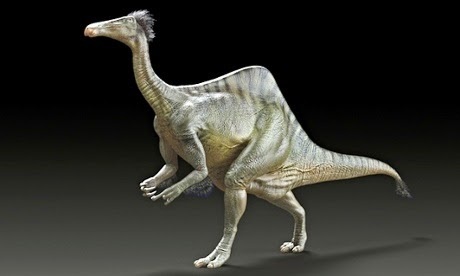 Ian Sample
Ian SampleA reconstruction of the dinosaur Deinocheirus mirificus. Photograph: Yuong-Nam Lee/KIGAM
Deinocheirus mirificus, or ‘unusual horrible hand’, had long, clawed forearms, a sail on its back and
a duck-like bill
Nearly 50 years after researchers uncovered the gigantic arms of a mysterious dinosaur in the Gobi desert, the true nature of the beast has finally been established.
Since its discovery in 1965, the only clues to the engimatic creature were its shoulders and forelimbs – the latter measuring an astounding 2.4 metres long – and a few ribs and vertebrae dug from the ground by a joint Polish-Mongolian expedition.
The fossils were extraordinary enough for scientists to declare the dinosaur a new genus and species. The name they decided upon was Deinocheirus mirificus, meaning “unusual horrible hand”.
In the absence of more complete remains, early reconstructions were at times wildly speculative. In 1970, one palaeontologist argued that Deinocheirus was a giant sloth-like climber that hung beneath the branches of enormous trees. A more accurate view put the dinosaur in a group of beaked omnivores called ornithomimosaurs, which resembled giant ostriches, at least superficially.
Deinocheirus walking. One of the newly discovered specimens was 11 metres long and weighed more than six tonnes. Video: Yuong-Nam Lee/KIGAM But writing in the journal Nature on Wednesday , a Korean-led team of experts has transformed scientists’ understanding of the animal. They report the discovery of two nearly complete 70 million-year-old Deinocheirus skeletons, pieced together from fossils unearthed in Mongolia, along with a skull and hand that had been poached and sold on to private collectors.
With the new remains, the researchers built the first accurate reconstruction of the dinosaur. The creature stood tall on its back legs, but sported long, clawed forearms. Neural spines formed an impressive sail on its back and its long, toothless snout flared out to both sides. The duck-like bill may have helped Deinocheirus forage for food at the bottom of streams, while blunt, flattened bones under its claws prevented it from sinking on wet ground.
One of the new specimens grew to 11 metres long and weighed more than six tonnes. Its broad hips and large feet suggest it was not agile. The animal likely fed on plants and small animals, though the remains of fish were found among its stomach contents.
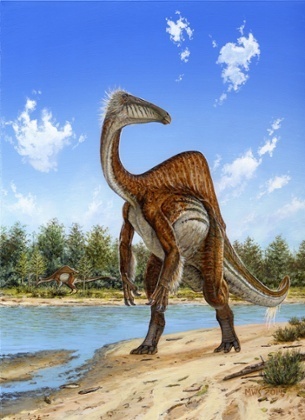 An artist’s impression of the dinosaur Deinocheirus mirificus. Photograph: Yuong-Nam Lee/KIGAM Writing in the journal, Young-Nam Lee at the Korea Institute of Geoscience and Mineral Resources, describes the team’s surprise on seeing the complete dinosaur. “The discovery of the original specimen almost half a century ago suggested that this was an unusual dinosaur, but did not prepare us for how distinctive Deinocheirus is – a true cautionary tale in predicting body forms from partial skeletons,” he says.The Guardian
An artist’s impression of the dinosaur Deinocheirus mirificus. Photograph: Yuong-Nam Lee/KIGAM Writing in the journal, Young-Nam Lee at the Korea Institute of Geoscience and Mineral Resources, describes the team’s surprise on seeing the complete dinosaur. “The discovery of the original specimen almost half a century ago suggested that this was an unusual dinosaur, but did not prepare us for how distinctive Deinocheirus is – a true cautionary tale in predicting body forms from partial skeletons,” he says.The Guardian

Published on October 22, 2014 14:49
History Trivia - fire destroys the temple of Apollo at Daphne
October 22
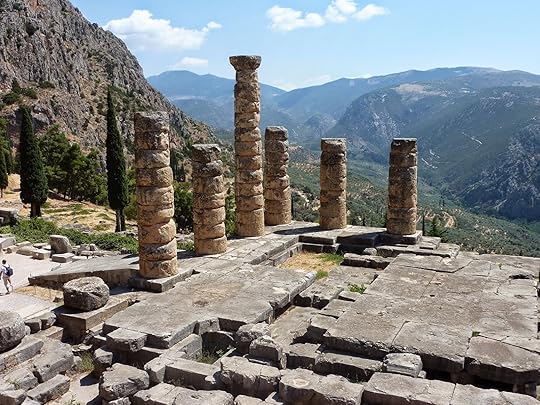
362 A mysterious fire destroyed the temple of Apollo at Daphne outside Antioch.
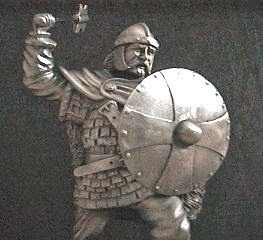
741 King Charles Martel, the grandfather of the great emperor Charlemagne, died at age 53.
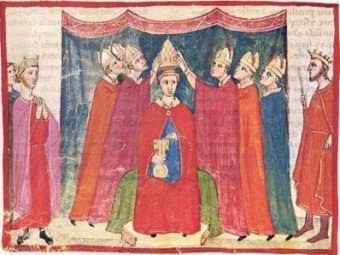
1303 Benedict XI was elected Pope. The brief pontificate of Benedict was dominated by difficulties with King Philip IV the Fair of France.


362 A mysterious fire destroyed the temple of Apollo at Daphne outside Antioch.

741 King Charles Martel, the grandfather of the great emperor Charlemagne, died at age 53.

1303 Benedict XI was elected Pope. The brief pontificate of Benedict was dominated by difficulties with King Philip IV the Fair of France.

Published on October 22, 2014 05:31
October 21, 2014
History Trivia - Henry VIII of England named Defender of the Faith
October 21,
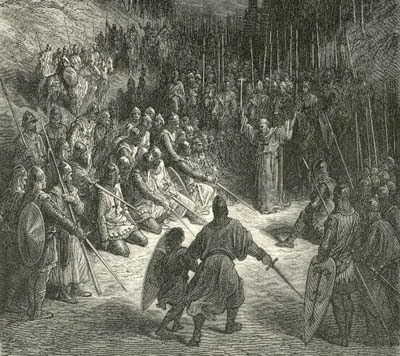
1096 The People's Crusade (part of the First Crusade also known as the Peasants' Crusade or the Paupers' Crusade), led by Peter the Hermit, was slaughtered by Seljuk Turks at the Battle of Civetot.
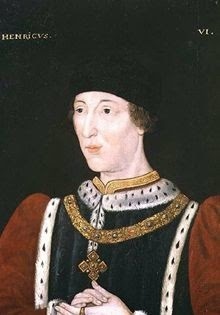
1422 When Henry VI was eight months old he succeeded to the English throne, and shortly afterwards, by the death in 1422 of his maternal grandfather, Charles VI, he became titular king of France.
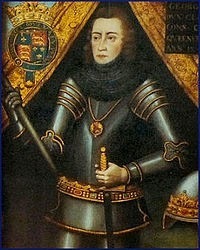
1449 George, Duke of Clarence, brother of Edward IV and Richard III was born.

1529 The Pope named Henry VIII of England Defender of the Faith after he defended the seven sacraments against Luther.


1096 The People's Crusade (part of the First Crusade also known as the Peasants' Crusade or the Paupers' Crusade), led by Peter the Hermit, was slaughtered by Seljuk Turks at the Battle of Civetot.

1422 When Henry VI was eight months old he succeeded to the English throne, and shortly afterwards, by the death in 1422 of his maternal grandfather, Charles VI, he became titular king of France.

1449 George, Duke of Clarence, brother of Edward IV and Richard III was born.

1529 The Pope named Henry VIII of England Defender of the Faith after he defended the seven sacraments against Luther.

Published on October 21, 2014 04:50
October 20, 2014
King Tut Re-Creation Presents a Shocking Image
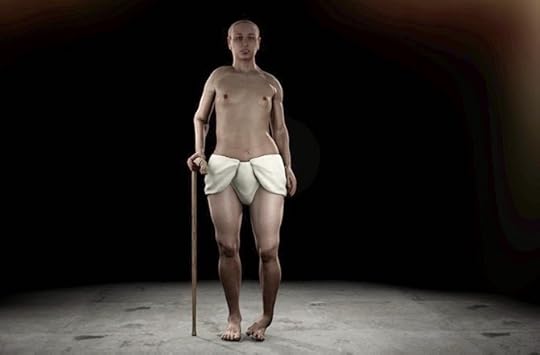 by Rossella Lorenzi
by Rossella Lorenzi A virtual reconstruction depicts King Tut at the time of death.
Tutankhamun’s beautiful golden mask, the embodiment of a man secure in his power, has been flattering the pharaoh for many centuries, according to the most detailed image yet of the teenage king’s face and body.
In the flesh, King Tut had a club foot, a pronounced overbite and girlish hips, says a “virtual autopsy” built using more than 2,000 computerized tomography (CT) scans of the pharaoh’s body.
Built for the BBC documentary, “Tutankhamun: the Truth Uncovered,” the shocking 3-D computer model could shed new light on the death of the boy pharaoh at the age of 19.
King Tut Felled by Malaria, Bone Disease
Previous theories suggested King Tut may have died as a result of a chariot accident, but the virtual reconstruction showed a different scenario.
“It was important to look at his ability to ride on a chariot and we concluded it would not be possible for him, especially with his partially clubbed foot, as he was unable to stand unaided,” Albert Zink, head of the Institute for Mummies and Icemen in Italy, told the U.K. daily The Independent.
According to Ashraf Selim, an Egyptian radiologist, King Tut “also developed Kohler’s disease or death of the bones, during adolescence, which would have been incredibly painful.”
King Tut Wore Orthopedic Sandals
Indeed, about 130 walking sticks found in King Tut’s treasure-packed tomb would support the theory that the boy pharaoh had to rely on canes to get around.
Zink believes the pharaoh’s early death was most likely caused from his weakened state — a result of genetic impairments inherited from his parents, who were siblings.
Indeed, in 2010 an international genetic study produced a five-generation pedigree of Tutankhamun’s immediate lineage. In the study, the mummy known as KV55 — most likely the “heretic” Akhenaten — and KV35YL, also known as the Younger Lady, were identified as siblings, as well as King Tut’s parents.
King Tut Death by Chariot? Not So Fast
The study confirmed the frail king was afflicted by malaria and suffered a badly broken leg, above his knee, just before he died.
“It is difficult to say whether malaria may have been a serious factor in the cause of death,” Zink said.
The boy pharaoh has been puzzling scientists ever since his mummy and treasure-packed tomb were discovered on Nov. 22, 1922, in the Valley of the Kings by British archaeologist Howard Carter.
Weird Facts About King Tut and His Mummy
Only a few facts about his life are known. Tut.ankh.Amun, “the living image of Amun,” ascended the throne in 1332 B.C., at the age of 9, and reigned until his death at 19.
As the last male in the family, his death ended the 18th dynasty — probably the greatest of the Egyptian royal families — and gave way to military rulers.
Discovery News

Published on October 20, 2014 16:47




